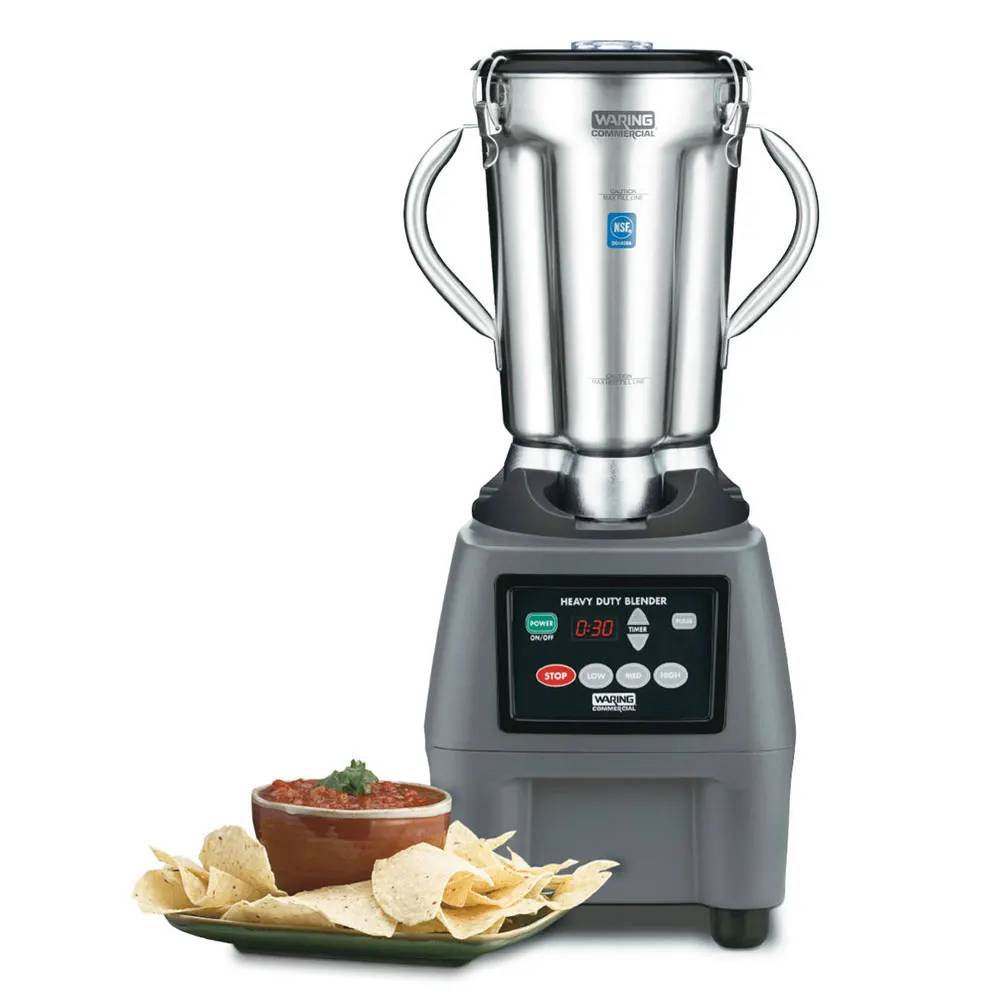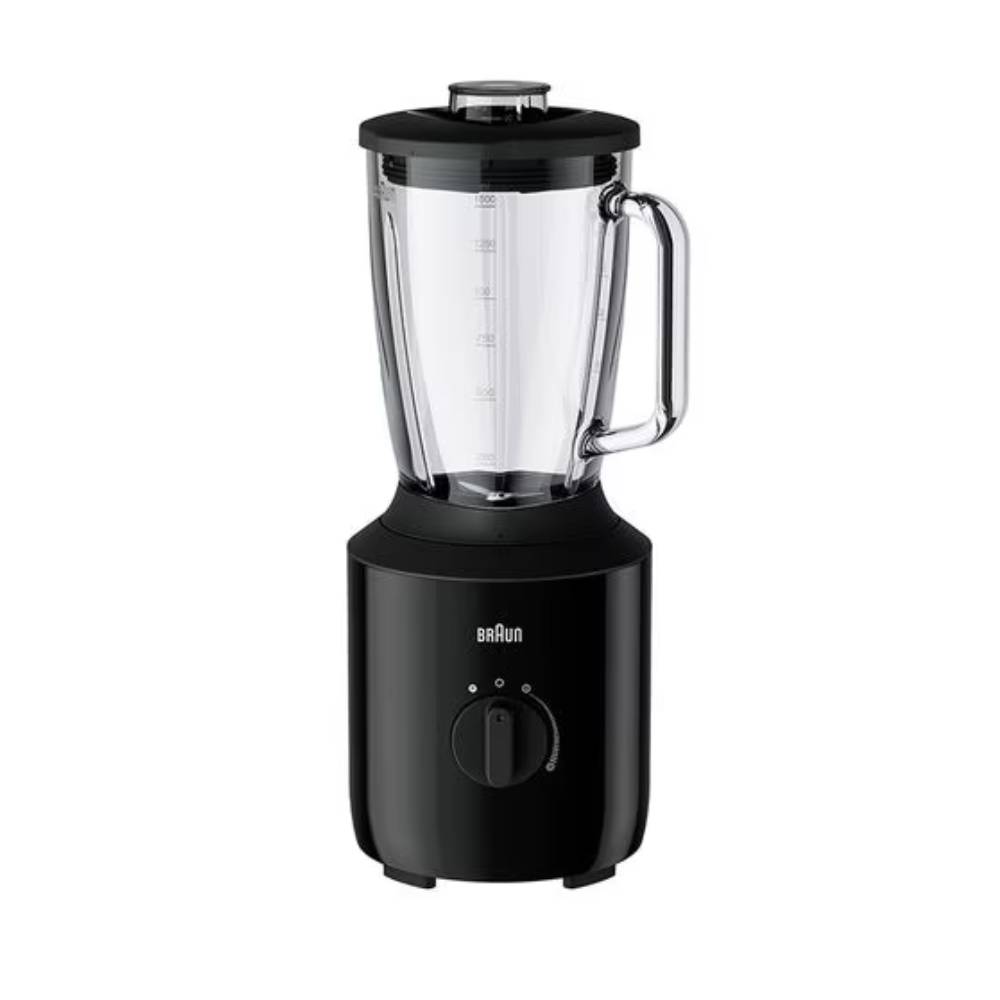Choosing a blender for your kitchen can be overwhelming, especially considering the investment involved and the wide range of options available, each with its own unique features.
Immersion Blenders: Perfect for In-Pot Blending
If you want to blend directly in pots and pans, immersion blenders (aka stick blenders or hand blenders) are perfect for you. While generally less powerful than countertop models, they are great at processing soups and purees, and emulsifying dressings and sauces. Some models also come with a whisk attachment, so on top of blending, they can also whip cream, beat eggs, or mix pancake batter directly in the bowl.
Heavy Duty
Heavy-duty immersion blenders are ideal for large volumes. They boast longer shafts (some exceeding 700mm) to reach into deeper and larger pots. These powerful blenders are capable of handling anywhere from 100 to 400 litres of ingredients, making them a popular choice for commercial kitchens for preparing large batches of soups, sauces, and other liquid-based dishes.
However, the trade-off for power is weight, which can be more than 9kg. To address this, some models offer support accessories for hands-free operation. And since these heavy-duty blenders can be bulky, they often come with wall mounts for convenient storage.
For easy cleaning, look out for models with detachable parts like the shaft, bell housing, and blades. A good example of a brand offering heavy-duty immersion blenders is Robot Coupe.
Light Duty
When picking a hand blender for light tasks, choose one that feels comfortable and light to hold, which will make it easier for one-handed operation.
Cordless options can be particularly handy for kitchens with limited outlets or for outdoor cooking where access to power sockets may be limited. On the other hand, corded models ensure continuous power without worrying about battery life. Popular brands for light-duty hand blenders include Cuisinart, Lacor, and Waring.


Tabletop Blenders: Powerhouse for Tough Blending Jobs
If you need an appliance for blending frozen fruits, making smooth smoothies, shakes, frozen cocktails, or crushing ice, then a tabletop blender fits the bill. While they take up more counter space than immersion blenders, tabletop blenders generally offer greater power, making them ideal for more demanding blending tasks.
Ultra Heavy Duty
Ultra heavy-duty blenders are designed to handle the most demanding blending tasks in high-volume settings. These blenders often feature motors exceeding 3 HP, allowing them to process large batches and tough ingredients with ease.
For instance, the Waring CB15 with its 3.75 HP motor can handle over 100 servings per day, making it ideal for busy kitchens. Some blenders in this category come with a stainless steel container, which is robust and can withstand heavy use and frequent cleaning without showing signs of wear or damage, it is also resistant to corrosion and staining. While the initial cost of the stainless steel jar may be higher, it can offer better value in the long run by requiring less frequent replacement and maintenance compared to copolyester jars.
There are also brushless motor designs that are ultra heavy-duty. Unlike traditional motor designs, brushless motors eliminate the need for carbon brushes. This reduces maintenance and extends the lifespan of your blender. They use permanent magnet rotors that minimize friction, so operation is significantly quieter. Brushless motors are energy efficient, converting more power for use and reducing energy consumption. Durability is another key benefit, as these motors can withstand continuous use without overheating, making them ideal for high-volume settings. They typically outlast traditional motors by a factor of 10.
Both the Santos 62 and Santos 66 exemplify these advantages.
Heavy Duty
Heavy duty blenders are a staple in many commercial kitchens, known for their robust performance and reliability. They feature motors ranging from 3 to 3.5 HP, typically capable of making over 75 blended drinks per day. While some models offer 2-speed options, the 10-speed variant stands out, giving you maximum control over the blending consistency.
Built for commercial kitchens, some models include convenient features such as total drink counter displays, pre-programmed settings for popular drinks, customizable programs for your signature recipes, and BPA-free copolyester containers that are stackable. These impact-resistant plastic containers are sturdy enough for heavy-duty use while offering a lightweight alternative to stainless steel and glass, reducing strain and fatigue during use.
Brands offering heavy-duty blenders include Waring and Vitamix.
Light to Moderate Use
If you are looking for a blender for smaller cafes, bars, and home kitchens where you blend on a smaller scale, then this lower-volume category would be more suited for you.
These blenders usually have motors of about 1 HP and are ideal for making less than 50 drinks per day. Being light duty doesn’t make them inferior. For instance, the Waring BB300 can whip up three 16 oz. margaritas in just 12 seconds, while the Braun JB 3150 features a unique triangular glass jug and higher blade positioning, designed to avoid blind spots and redirect ingredients more efficiently toward the blending area, giving you a smoother and more consistent blend. Other brands offering blenders in this category include Severin, Rommelsbacher, and Santos.




